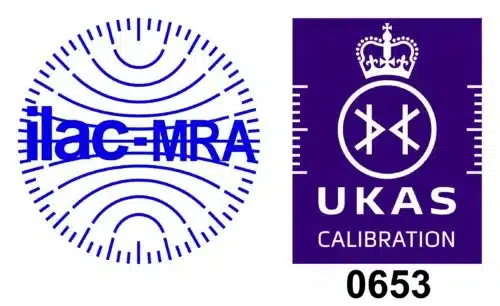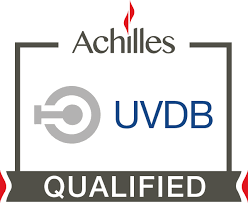The principal applicable British Standards are: BS-5228:2 (2009 plus the 2014 Amendment 1) for demolition/construction vibration and BS 7385: 2 (1993) for vibration limits for building damage.
Guide Values
Line 2 gives the limits for minimal risk of cosmetic damage resulting from transient vibration for un-reinforced or light framed structures (residential or light commercial buildings). The standards advise that, if the vibration is sufficiently continuous to give rise to dynamic magnification due to resonance (especially at lower frequencies), the guide values may need to reduced by up to 50%.
The guide values are for each individual component of vibration: z – vertical, x – horizontal along the shortest line from source to receiver, y – horizontal and perpendicular to x. Crucially Line 2 is dependent upon the dominant frequency of the velocity spectrum of the PPV.
Notice also, however, that the lowest frequency on the graph is 4 Hz. This is because below 4 Hz the standards advise that a maximum displacement of 0.6 mm/s should be used instead of a PPV limit.
Tri-axial Measurements
So, in order to satisfy the explicit requirements of BS 5228:2 and BS 7385: 2 for vibration and building damage it is necessary to measure dominant frequency and displacement as well as PPV for all 3 axes. Tri-axial measurements of PPV, dominant frequency and displacement are therefore essential if measurements or monitoring are to be in accordance with these standards.
BS 7385: 2 discourages use of the vector sum vibration level for comparison with the guide values but advises that it should be used for detailed engineering analysis. BS 7385: 2 also expresses a preference for raw data to be recorded so that additional processing could potentially be carried out subsequently. Systems which measure vector resultant velocity and store the raw vibration signals for each axis (in addition to PPV, dominant frequency and displacement) are suited to more detailed analysis in addition to fulfilling the basic requirements of the standards.
Simply measuring PPV is not therefore sufficient to comply with the current British Standards addressing the risk of building damage from construction/demolition vibration. It is essential that the dominant frequency of the PPV is measured and displacement for when the dominant frequency is less than 4 Hz. Consideration should also be given to measuring the vector sum vibration velocity and recording the raw data for each axis in case a detailed analysis needs to be carried out.
ANV Measurement Systems can supply instrumentation which fully meets the requirements of BS 5228: 2 and BS 7385:2.









